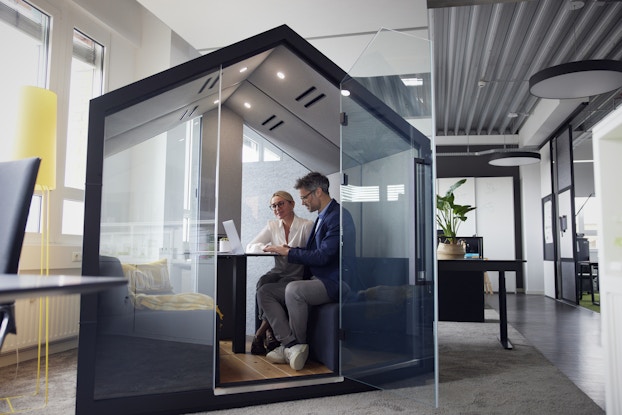
In the post-pandemic era, many companies adopted a hybrid work model, leveraging the benefits of both in-person and virtual operations; today, several continue to maintain at least some level of remote work.
To help business leaders navigate this new era, the U.S. Chamber of Commerce Foundation’s Path Forward series gathered industry experts to share their insights on the lasting impact of hybrid work and what it means for employers, physical spaces, and communities.
In remote and hybrid work models, communication is key
While the work may remain the same, communication in remote and in-person offices is bound to differ. According to Jeanine W. Turner, Ph.D., author and professor at Georgetown University, adjusting to a remote or hybrid work environment requires even more intentionality in how and why we communicate.
“We tend to focus on the content, conveying information … but it’s also about the relationship,” she explained. “A lot of those relationship cues are missing or muted in many of these [remote] environments.”
Turner offered the following tips to leaders looking to improve their communication across work models:
- Understand your audience. In any interaction, highlight what is relevant to your audience, why you’re sharing the message, and what you need from them.
- Determine what type of communication is needed. Combinations of synchronous and asynchronous communication methods can help employers make the best use of everyone’s time and attention.
- Consider the context, not just the message. Evaluate your presence and that of your communication partner, as well as what constraints they might be dealing with. Approach interactions with empathy to help build trust and nurture the relationship.
[Read more: Best Technology Tools for Hybrid Teams]
The shift to remote work has driven outbound migration from cities
Despite more companies calling for return-to-office, major metro areas continue to see more people moving out than moving in.
“It’s been a huge shock for businesses that are located in cities,” said Arpit Gupta, Ph.D. and associate professor at New York University. “Retail sales are down substantially … there have been a lot of business failures.”
He explained that public transit and other offerings of major cities are no longer as attractive to residents, particularly those that can work from anywhere. Instead, more people are migrating to the suburbs, which are currently seeing increased business activity and new business launches.
“Cities that [have] an existing workforce that’s moving remote … really need to think creatively and strategically about how best to retain their residents,” Gupta noted. “I think fundamentally, it’s about making cities more attractive places … even when people have the choice of [where they work].”
The future workplace will look different in the hybrid work era
According to EY’s Future Workplace Index, approximately 60% of companies are operating in a hybrid model, with about 20% adopting fully-remote work and the other 20% in-office full-time. With a majority of businesses embracing telecommuting, many employers are rethinking what the physical workplace will look like in the future.
“The definition of [space] is going to evolve over time,” explained Mark Grinis, Global Real Estate, Hospitality, and Construction Leader at EY. “That flexibility of remote space, a home space, [or] a third space [allows us to be] mobile and address our space … in our own way [to] meet the needs of the employee [as well as] the priorities and objectives of the organization.”
For companies who are seeking or maintaining office space at least part of the time, Grinis encourages leaders to consider the role of the physical office— most often, having a space to collaborate — and curating a space that promotes productivity and “earns the commute.”
Offering flexibility and attention helps attract and retain top talent
While employers today continue to feel the impact of labor shortages, remote and hybrid companies have a strategic advantage in recruitment and retention.
“Choice and flexibility are going to be key to holding onto talent in this new hybrid world,” said Sara Morales, Vice President of People and Communities at Cisco. “Hybrid allows us to reach the best talent wherever they may be.”
After attracting top talent, the next step is to keep them engaged and connected — a task easier said than done. In a joint study by Chief Executive and SHRM, 60% of respondents cited maintaining company culture as the biggest remote talent management challenge. To help leaders develop a strong remote culture and keep employees engaged, Morales recommends the following strategies:
- Offer choice and flexibility. Remote and hybrid work options, as well as other flexible work arrangements, can improve work-life balance and overall job satisfaction.
- Create opportunities for skilling and reskilling. Building easier paths to internal career advancement can increase your employees’ motivation while also filling staffing needs.
- Prioritize attention. Having ongoing conversations with your employees can help you understand their motivations (both as a worker and an individual) and set them up for lasting success.
[Read more: 6 Team-Building Exercises for Hybrid Teams]
CO—is committed to helping you start, run and grow your small business. Learn more about the benefits of small business membership in the U.S. Chamber of Commerce, here.






